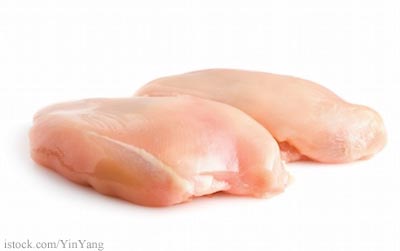 Campylobacter and Salmonella are common causes of food poisoning often associated with poultry. They’re not considered legal adulterants so it’s okay for companies to produce and sell poultry with some amount of these bacteria on them, but until now there weren’t established limits on the the bulk of poultry products consumers buy.
Campylobacter and Salmonella are common causes of food poisoning often associated with poultry. They’re not considered legal adulterants so it’s okay for companies to produce and sell poultry with some amount of these bacteria on them, but until now there weren’t established limits on the the bulk of poultry products consumers buy.
In 1996, the USDA set standards for Salmonella and Campylobacter on ground poultry sand whole birds, but last week it never had standards for poultry sold in pieces such as breasts, wings, and drumsticks despite the fact that poultry pieces account for 80 percent of consumer poultry purchases
Salmonella and Campylobacter sicken about 3 million Americans every year, according to the Centers for Disease Control and Prevention (CDC). So why would any percentage be allowed in poultry?
The USDA maintains that its because poultry is not intended to be eaten raw or served rare. A court case underscores this argument.
The new limits for Salmonella are no more than 25 percent for ground chicken, 13.5 percent for ground turkey, and 15.4 percent for chicken parts. For whole birds, the limit will be 9.8 percent for chicken and 7.1 percent for turkey. The Campylobacter standards require contamination rates of no more than 1.9 percent for ground chicken and turkey, and 7.7 percent for chicken parts.




